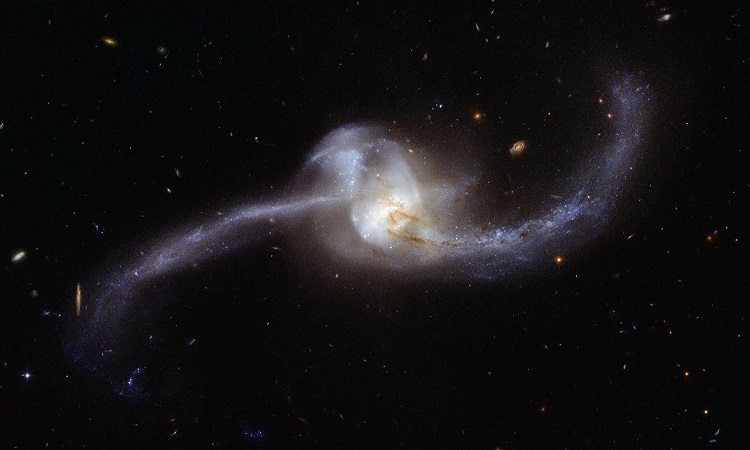A study reports that ribonucleic acid (RNA), a DNA analog believed by many to be the first genetic material of life, forms spontaneously on basalt lava glass. The discovery leaves a few questions unanswered, but provides a surprisingly simple answer to one of science’s most complex questions.
Fossil records suggest that life appeared on Earth around 3.7 billion years ago, just a few hundred million years after our planet was formed. How this happened is one of the greatest scientific questions of our time. To try to answer this, many researchers are turning to RNA, considered to be the possible hereditary material of these first organisms.
This molecule can indeed carry out two distinct processes vital for life. Like DNA, it is made up of four chemical letters that can carry genetic information. Moreover, RNA can also catalyze the chemical reactions necessary for life, just like proteins.
So far, however, no one has found a sufficient set of prebiotic conditions to cause hundreds of letters of RNA to bind together into long enough strands. However, the latter are essential to support the complex chemistry necessary to trigger Darwinian evolution, hence the interest of this study published in the journal Astrobiology.
Basalt glass as a catalyst
Stephen Mojzsis, a geologist at the Research Center for Astronomy and Earth Sciences of the Hungarian Academy of Sciences, recently wondered if basalt glass could have played a key role in this complex process. And for good reason, this material is rich in metals such as magnesium and iron which promote many chemical reactions. Additionally, we know that basalt glass was ubiquitous on young Earth.
“For several hundred million years after the formation of the Moon, frequent impacts coupled with abundant volcanism on the young planet formed molten basalt lava, the source of basalt glass”, explains the researcher. “The impacts also evaporated water to dry land, providing aquifers where RNA could have formed.”
The researcher’s intuition was very good. Lab research has indeed shown how these rocks can help individual RNA letters, called nucleoside triphosphates, bind together into long strands.
No extreme conditions required
In detail, several different basalt glass samples were sent to the Foundation for Applied Molecular Evolution. On site, a team led by molecular biologist Elisa Biondi was responsible for grinding each sample into a fine powder before sterilizing it and mixing it with a solution of nucleoside triphosphates.
Without the presence of glass powder, the RNA letters failed to bind. In contrast, when mixed with the glass powders, the molecules came together in long strands of a few hundred letters. No heat or light was needed. “All we had to do was wait,” writes the biologist. Small strands of RNA formed after just a day, and some continued to grow for months.
In addition, no extreme conditions are required. The researchers have indeed demonstrated an impressive rate of synthesis for RNA molecules 90 to 150 nucleotides long at only 25°C and with a pH of 7.5. Some strands were even long enough to incorporate up to three hundred nucleotides.
According to calculations, a small impact region on the surface of young Earth containing only a few tons of fractured, water-soaked glass could have had the capacity to produce nearly one gram of RNA per day.
Some questions remain
These intriguing results raise other questions. One is how the nucleoside triphosphates could have appeared in the first place. Some studies suggest that nucleosides could have been delivered to the early Earth from space via meteorites. Nickel, abundant in some meteorites, could then have catalyzed this material to form triphosphates.
A bigger problem is the shape of these long strands of RNA. In modern cells, enzymes ensure the growth of most RNAs in long linear chains. Here, the researchers admit that their experiments produced a small amount of ramifications. However, the team points out that certain branched RNAs exist in organisms today and that related structures may have been present at the dawn of life.




